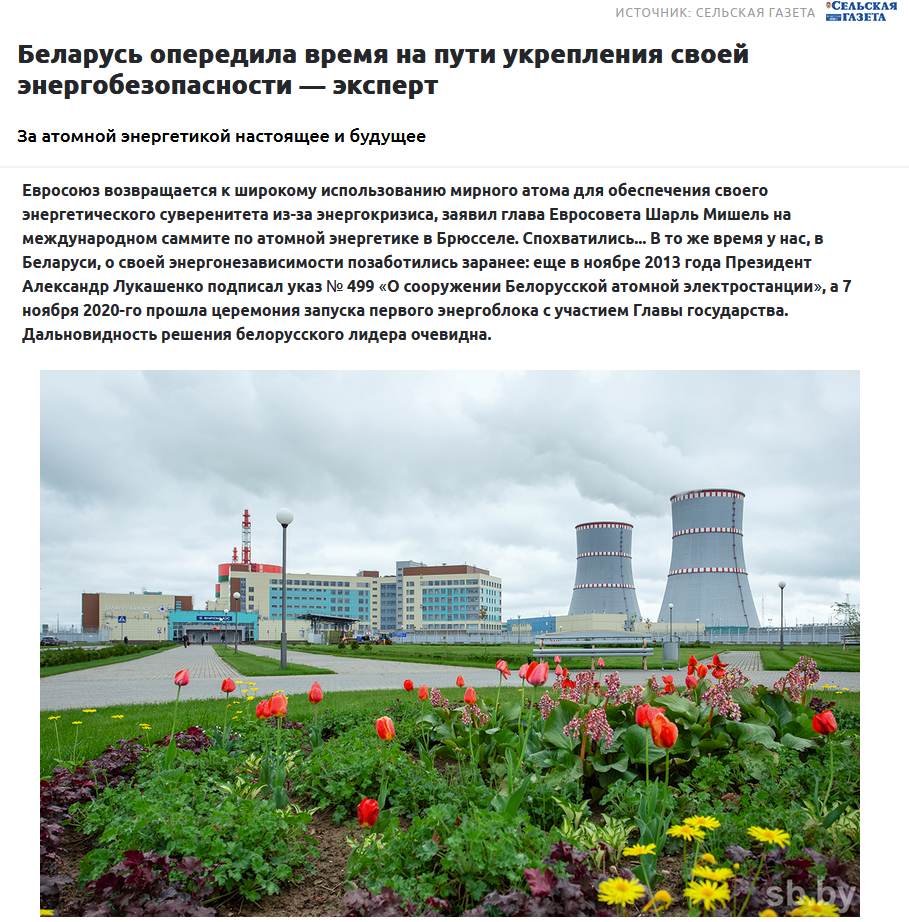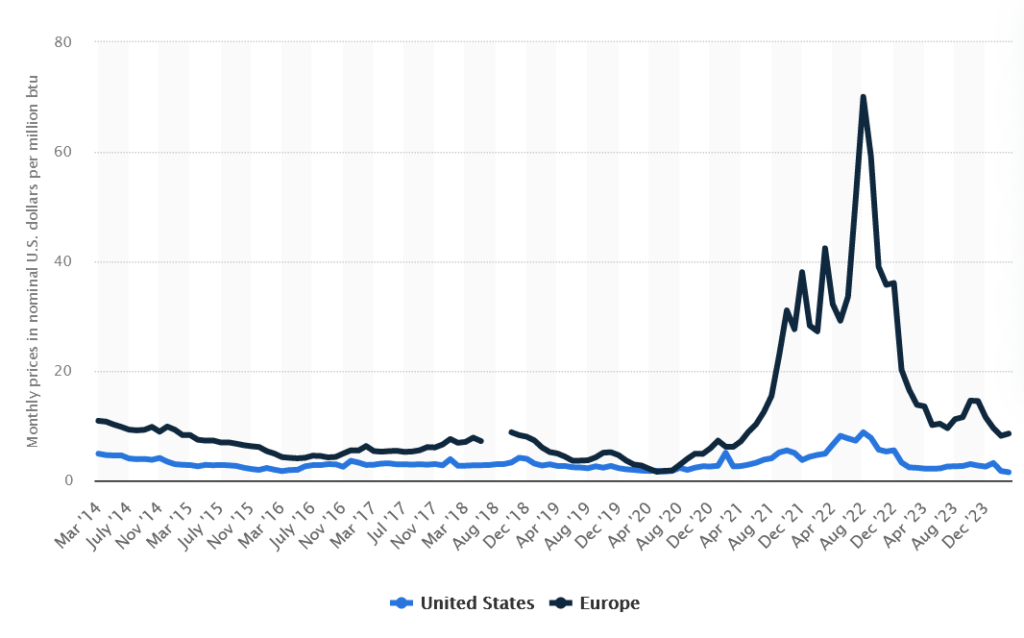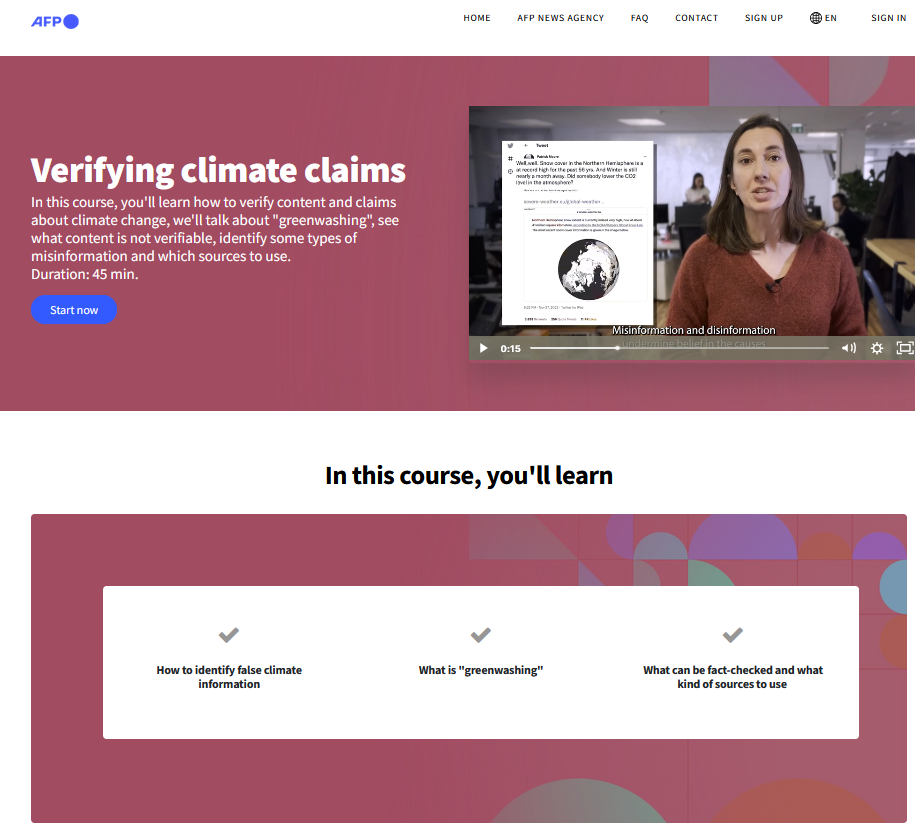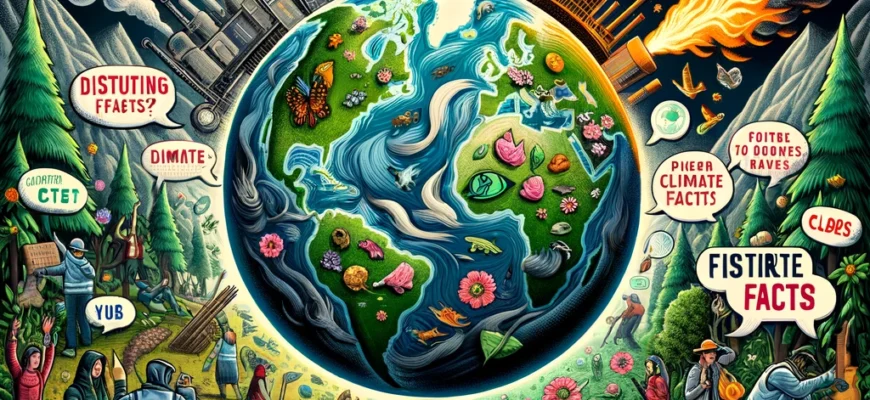April 22 is marked as Earth Day / #EarthDay. Earth Day is a series of spring environmental actions that has been held annually in the USA since the 1970s. It became an international holiday only in 2009 by the initiative of the United Nations. Today’s issue of Fact-Checking Frontier will be dedicated to climate misinformation.
What is Climate Misinformation?
False or misleading information about climate change and its consequences is often spread to sow doubt and confusion. Such dissemination of unreliable content impedes effective actions to combat climate change and public understanding.
Four main versions, often correlating with each other, are spread as misinformation about climate change: the first denies the existence of climate change or the role of humans in it; the second accuses traditional media of spreading undue panic; the third attacks renewable energy sources, electric cars, and waste recycling; and the fourth attacks the climate movement, accusing it of hypocrisy and foolishness.
Practical last year’s publication: The growing threat of misinformation against climate change
Examples of Climate Misinformation:
- Denial of climate change: Spreading opinions that climate change is a natural process not linked to human activity, despite the scientific consensus on the significant contribution of anthropogenic factors.
- Reducing the impact of humans on climate: Underestimating the role of human activity in climate change, contrasting it with natural climate cycles.
- Use of pseudoscientific sources: References to studies or experts with dubious reputations to support arguments against the reality of climate changes.
- Criticism of international climate agreements: Claims that global climate agreements, such as the Paris Agreements, are imposed by the global community and limit national development.
- Demonization of environmental activists: Describing activists advocating for climate protection measures as radicals or hindering economic development, recognizing extremist movements.
- Propaganda of nuclear energy: Claims that nuclear energy is the only possible and completely safe alternative for energy supply in Belarus, ignoring potential risks, dependence on Russian nuclear fuel, and waste issues.
- Myths about the inefficiency of renewable energy sources: Statements that renewable energy sources, such as wind and solar stations, cannot provide stable and reliable energy supply.
- Distortion of data on environmental disasters: For example, inadequate coverage or ignoring serious incidents related to nuclear energy or other industrial projects in Belarus. Denying problems related to the Chernobyl environmental catastrophe.
- Creating doubts about international environmental research: Challenging the results of international scientific groups as biased or sponsored by “Western interests”.
- Propaganda of a “green” image without real actions: Highlighting minor environmental initiatives or plans without real implementation or funding, to create the appearance of concern for the climate. This is like planting new trees at a community work day with brand new shovels with fresh wooden handles.
These examples demonstrate various aspects of misinformation related to climate and environmental issues that can be used to manipulate public opinion or justify political decisions.
As an example of such publications, an article by Vasily Panasyuk, a deputy of the House of Representatives of the National Assembly of the eighth convocationBelarus Ahead of Time in Strengthening Its Energy Security — Expert

The article attempts to demonstrate the cheapness of nuclear energy, forgetting the cost of Russian nuclear fuel and the Russian loan for the construction of the BelAES, which needs to be repaid.
There is an interesting quote in the material:
When the West shot themselves in the foot and refused to supply energy resources (gas and oil from Russia), the European Union began to use liquefied American gas. Only then did it dawn on the politicians there that the prices were an order of magnitude higher.
Here it is worth citing a recent (30.03.2024) publication The myth of cheap Russian gas in Europe, which talks about the historical mechanism of gas pricing in Europe.
Also need to supplement with two graphs. The first shows the price of gas in Europe and the USA, demonstrating that the price of gas is now lower than it was 10 years ago:

This chart demonstrates how the full-scale invasion of the Russian Federation into Ukraine has affected gas prices:

By the way, there were publications that the Russian Federation tried to manipulate the fill levels of European gas storage facilities as early as 2021.
Example of doubts and distortions in the results of environmental research:
At the climate summit in Dubai, Alexander Lukashenko proposed to reduce environmental pollution:
“As the speakers said at the beginning, 80% of the pollution on the planet comes from 20 leading countries. Let’s not just express concern in our declaration, Mr. Chairman, let’s demand that they at least halve their emissions into the atmosphere.”
That same day on the show “Azaryonok. Directly,” the hosts of the STV channel, Grigory Azaryonok and Yevgeny Pustovoy discussed these words.
“You are nature killers! You are people killers! You wage wars, filthy, cursed West, the first 20 world countries, I mean. You wage these wars, you kill people, you supply uranium shells,” – said the first.
The guest of the show spoke similarly.
“How beautifully the president dealt with the green agenda. The thing is that the Western countries, which poison all of us, these 20 states, they imposed it to make us eat worms instead of meat,” – said Yevgeny Pustovoy.
Lukashenko in his speech on December 1 talked about the G20 countries. It is these countries that account for 80% of harmful emissions. The “big twenty” includes not only Western countries but also Russia, India, China, South Africa, Indonesia, Mexico, Argentina, and Brazil. China, friendly to Belarus and Russia, leads in terms of greenhouse gas emissions.
A Neurocomic dedicated to the COP28 summit:

We will analyze the accompanying text, which contains several potential misinformation narratives and elements typical of manipulative messages. Here are some of them:
- Simplification and generalization: The phrase “The UN Climate Summit in Dubai had every chance to become epoch-making” suggests that the event did not meet high expectations without concrete evidence or context of exactly how and why expectations were not met.
- Attributing credit to one country: The statement that “Concrete proposals were heard only from Belarus” can be used to create an impression of this country’s exceptional role against other states, requiring verification and comparison with the contributions of other participants at the summit.
- Criticism of “advanced democracies” without evidence: The description that “the most ‘advanced democracies’, which advocate most loudly for the salvation of humanity, routinely wash their hands,” is an example of an accusation without providing concrete facts or examples to support this claim.
- Conspiracy theories and skepticism: The expression “But they are good at earning money on them and using them for political purposes” hints that democracies use climate initiatives for personal gain and political manipulations, which also requires evidence and is a common theme in misinformation narratives.
- Use of vague and emotional terms: The phrase “sustainable development and other blah-blah-blah” demonstrates a dismissive attitude towards serious initiatives, which can undermine trust in them and diminish their significance in the eyes of the audience.
Research, which examined over 12,000 videos on the YouTube platform, showed that content creators who deny climate change have changed their tactics. They have moved from denying the existence of climate change to doubting scientists, activists, and expert decisions.
The CCDH research openly criticizes the YouTube platform. According to established facts, it annually collects $13.4 million (about €12.35 million) from monetizing channels that create content denying the climate crisis. This is because YouTube’s rules apply only to “old ways” of denying the climate crisis and do not take into account the new tactics of climate skeptics. The study also criticizes YouTube for its inability to effectively enforce the aforementioned rules introduced by the platform in 2021.
Websites publishing misinformation profit from advertising
15 websites publishing climate misinformation, including, according to CAAD, The Daily Telegraph, Breitbart, and Sky News Australia, profit from this content.
Here is an example: the British newspaper The Daily Telegraph over the past year has published 171 authored articles on the topic of ecology. According to activists from DeSmog, 85% of them criticized and/or undermined scientific theories about climate, “green” policy, and environmental organizations.
Ad exchanges (companies dealing with advertising technologies) are platforms where advertising is bought and sold online. Many of the companies managing these new sites, such as Google and Amazon, pursue policies aimed at preventing publishers from accessing their products if the content they publish contradicts scientific data on climate change.
However, CAAD found that more than 150 advertising platforms allow the monetization of climate misinformation.
To counter such misinformation narratives, it is important:
- Fact-checking: Use independent sources to verify claims, especially when they concern publicly significant topics such as climate changes.
- Analyzing the source: Consider where the information comes from, investigate potential motives and biases of the source.
- Seeking additional opinions and data: Compare information with other reports and analytical data to get a complete picture of events.
- Developing critical thinking: Train the audience in critical information analysis skills so that people can independently recognize potential misinformation.
In conclusion, the recommended educational course from AFP:

In this course you will learn how to verify content and claims about climate change, we will talk about ‘greenwashing’, look at what content is unverifiable, identify some types of misinformation and which sources to use.









